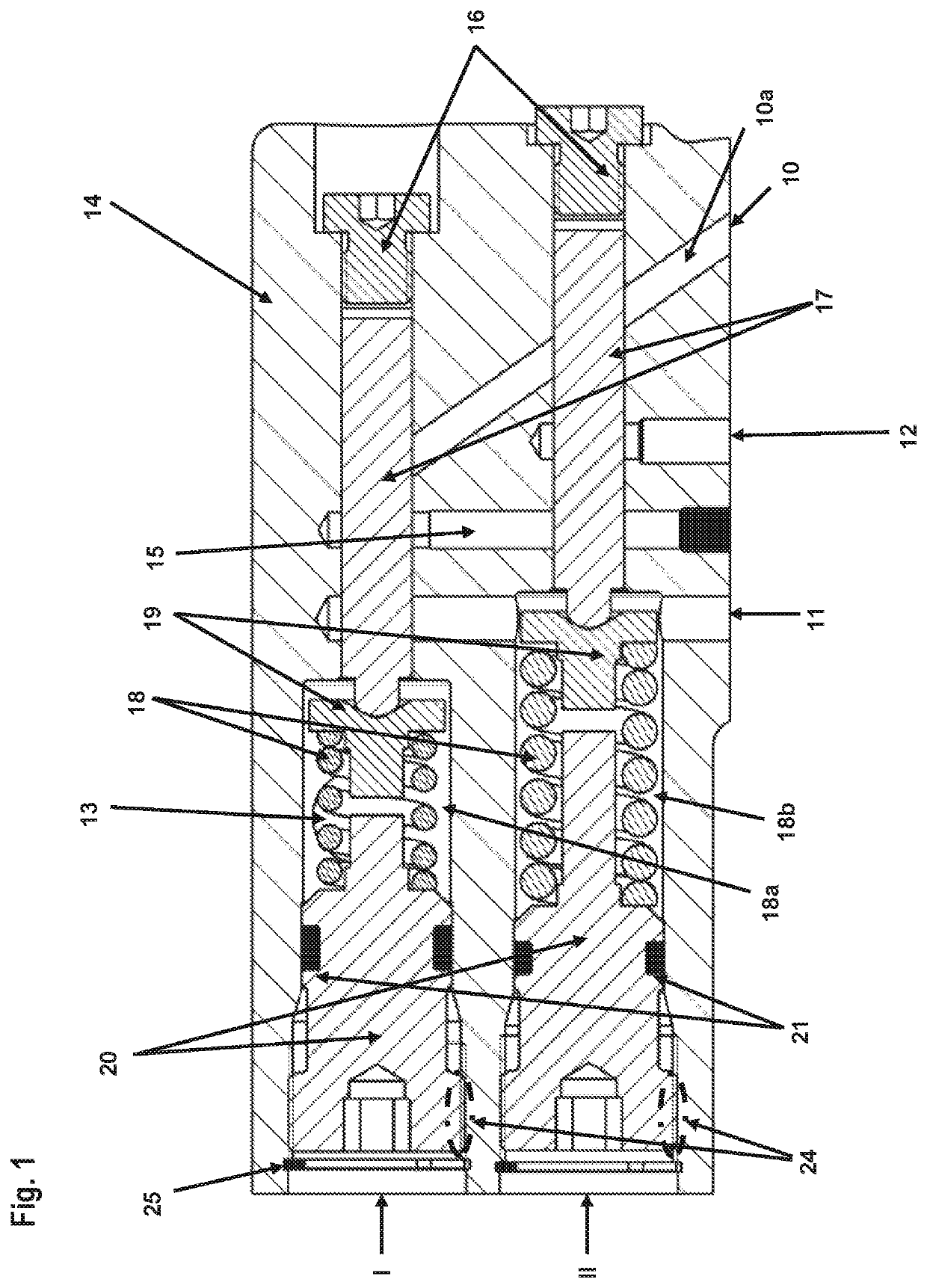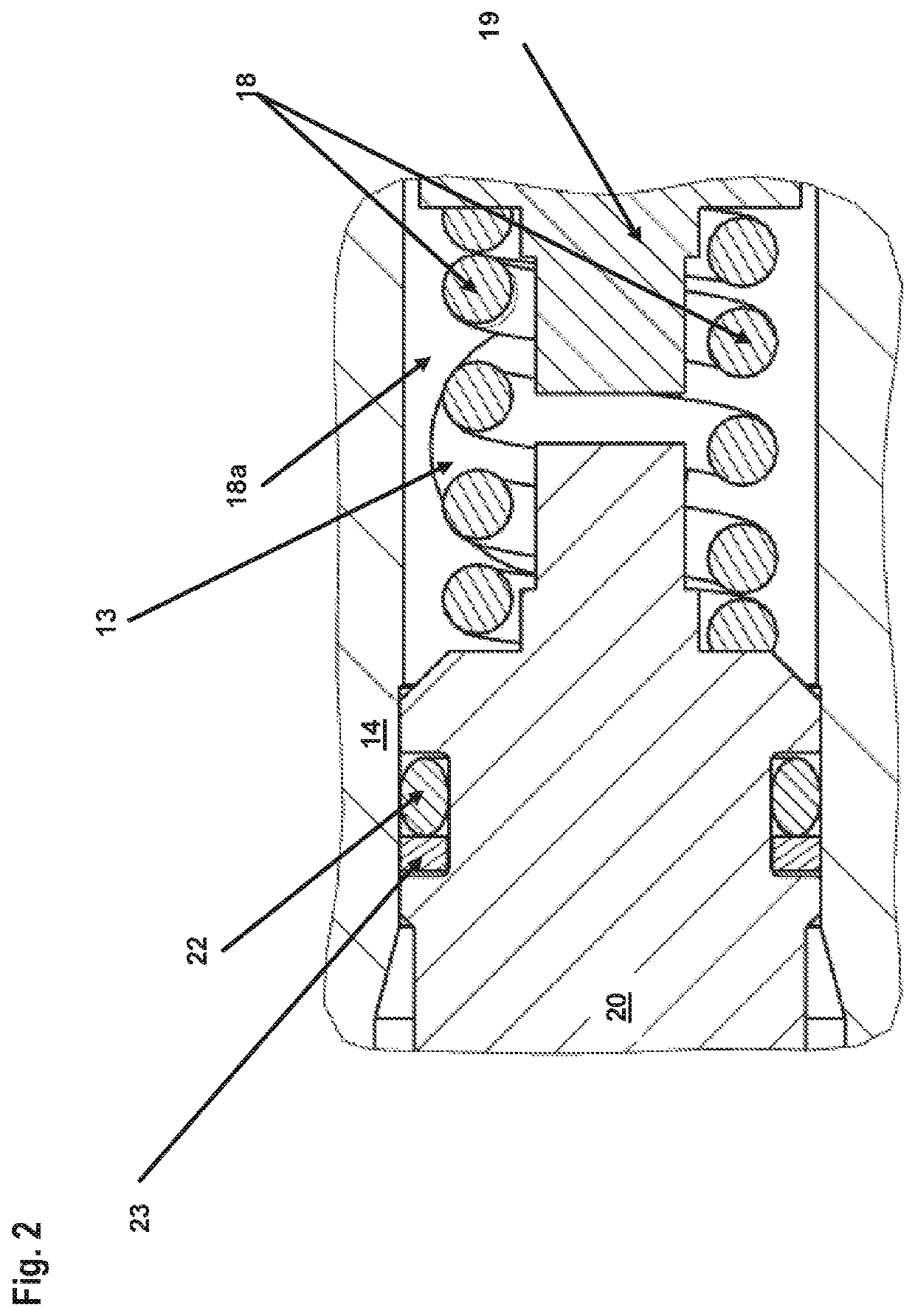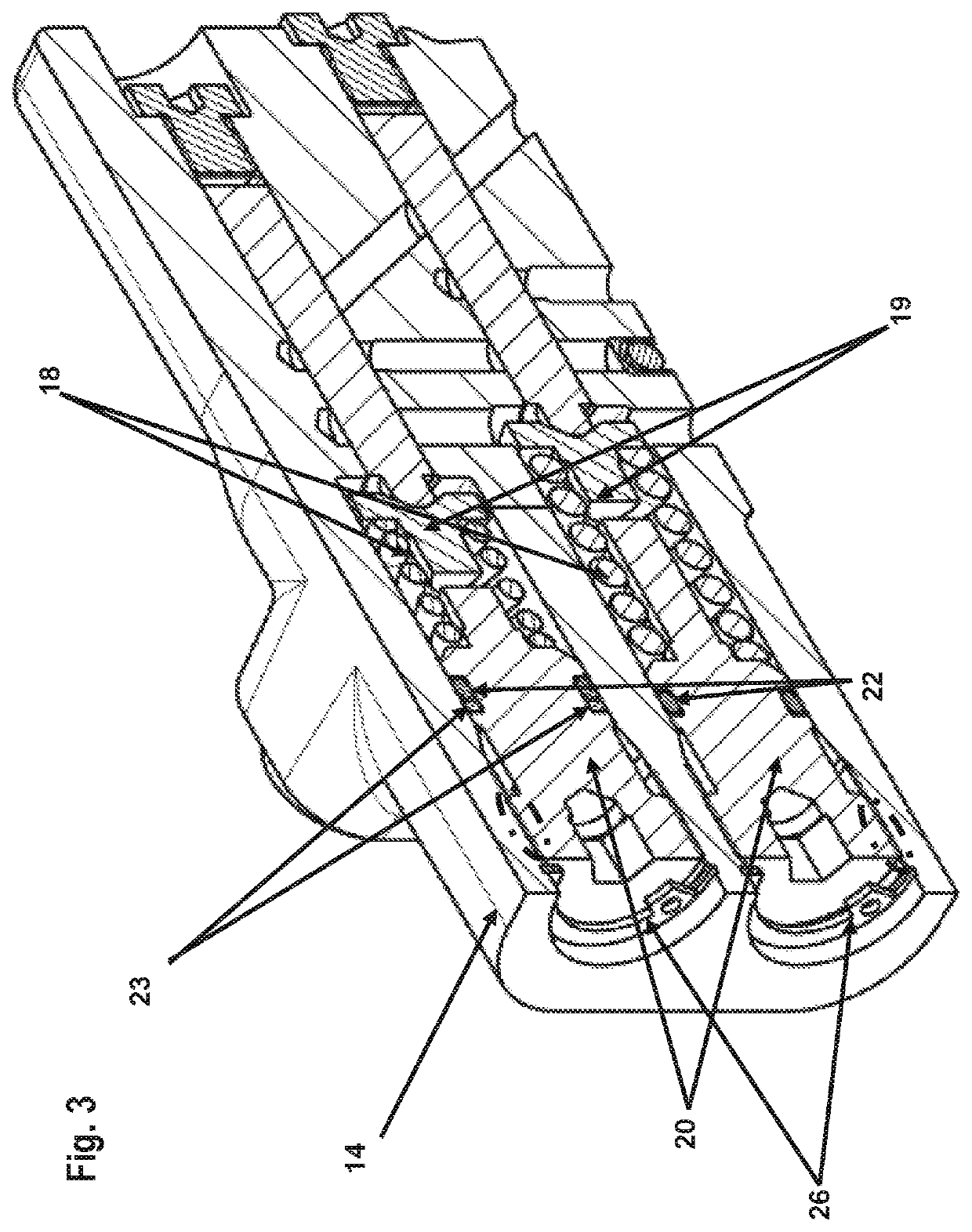Hydraulic apparatus, in particular hydraulic valve or hydraulic regulator
- Summary
- Abstract
- Description
- Claims
- Application Information
AI Technical Summary
Benefits of technology
Problems solved by technology
Method used
Image
Examples
Embodiment Construction
[0044]The hydraulic apparatus in accordance with the invention will be presented in the following with reference to an embodiment shown in FIGS. 1 to 4, wherein it is a hydraulic regulator having a load sensing regulator I and a pressure cut off II that are located in a common housing 14. The explanation of this embodiment takes place under the assumption that the hydraulic regulator is used to actuate the regulating apparatus of a hydraulic pump. The hydraulic regulator has four outer connectors 10, 11, 12, 13 to provide oil connections, namely the connector 10 to the high pressure output of the hydraulic pump to be regulated, the connector 11 to the tank return, a connector 12 to the regulating apparatus of the hydraulic pump, and a connector 13 for the supply of the external control pressure. The load sensing regulator I and the pressure cut off II are here connected to one another via a common bore 15 that is sealed to the outside.
[0045]Both regulator axles, i.e. that of the loa...
PUM
 Login to View More
Login to View More Abstract
Description
Claims
Application Information
 Login to View More
Login to View More - R&D
- Intellectual Property
- Life Sciences
- Materials
- Tech Scout
- Unparalleled Data Quality
- Higher Quality Content
- 60% Fewer Hallucinations
Browse by: Latest US Patents, China's latest patents, Technical Efficacy Thesaurus, Application Domain, Technology Topic, Popular Technical Reports.
© 2025 PatSnap. All rights reserved.Legal|Privacy policy|Modern Slavery Act Transparency Statement|Sitemap|About US| Contact US: help@patsnap.com



